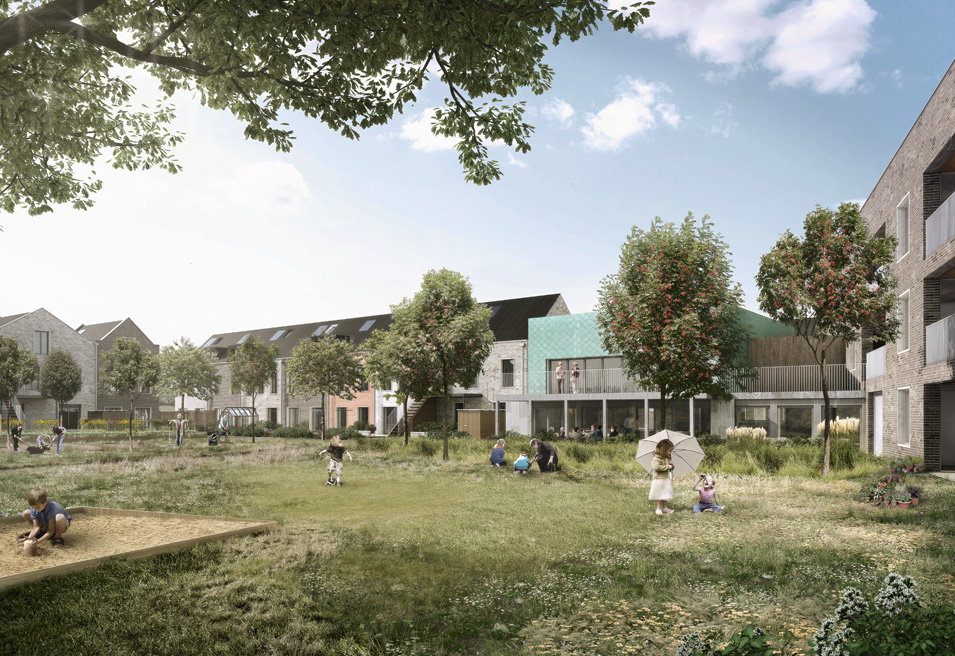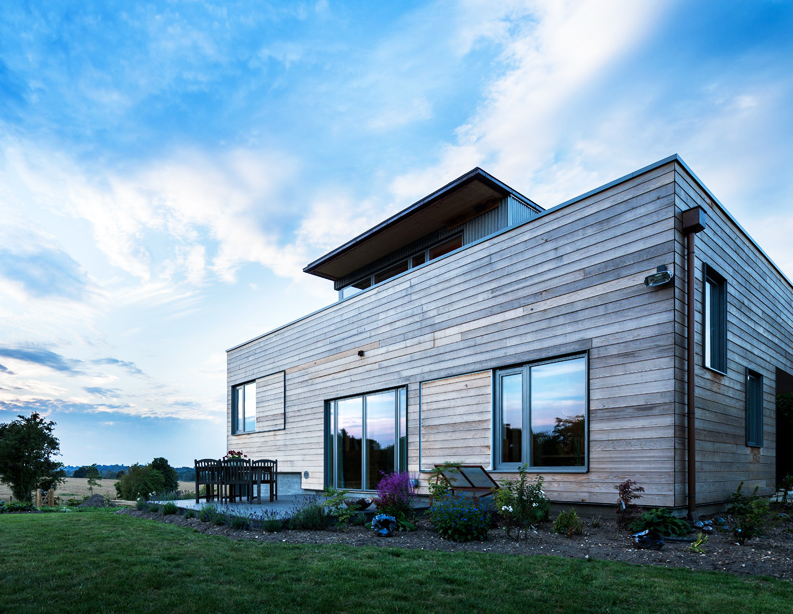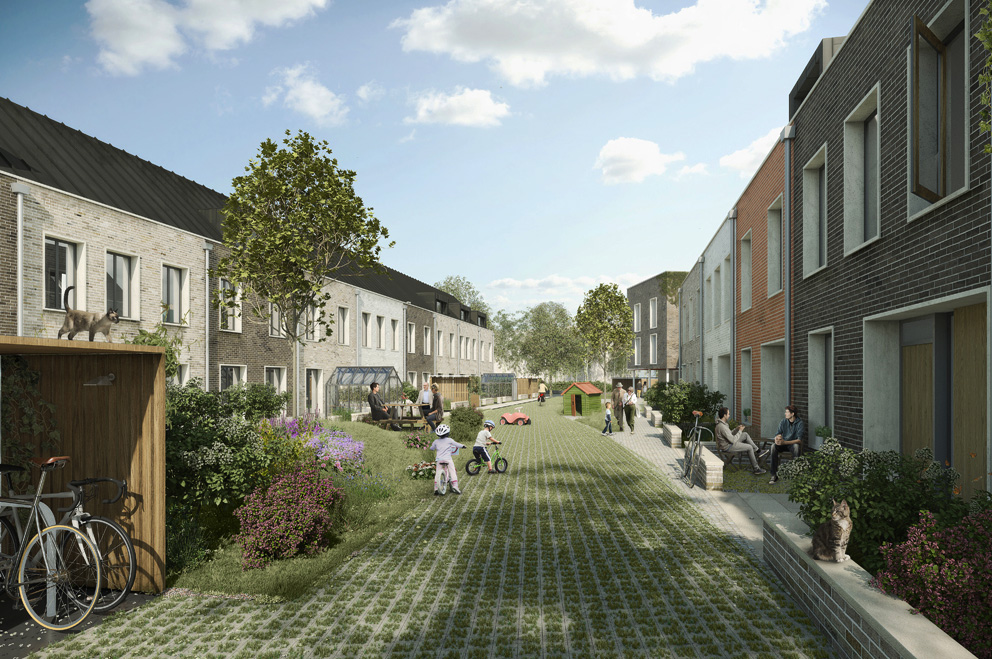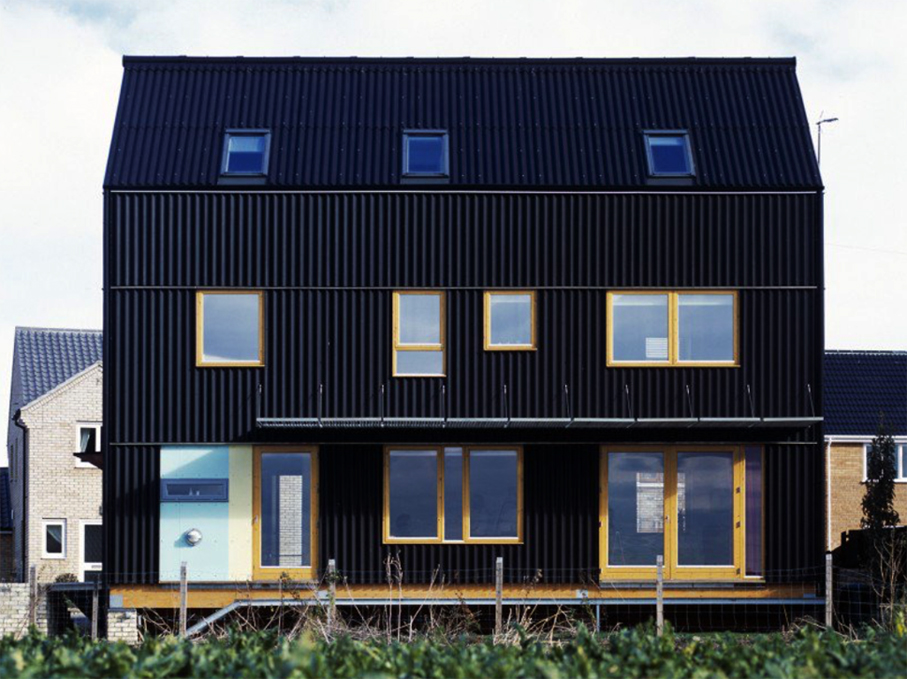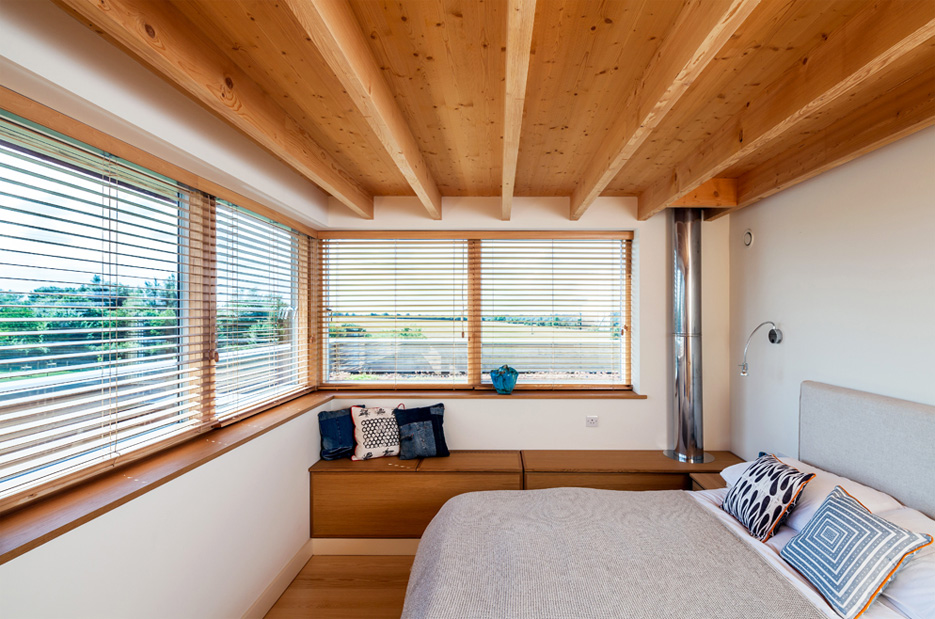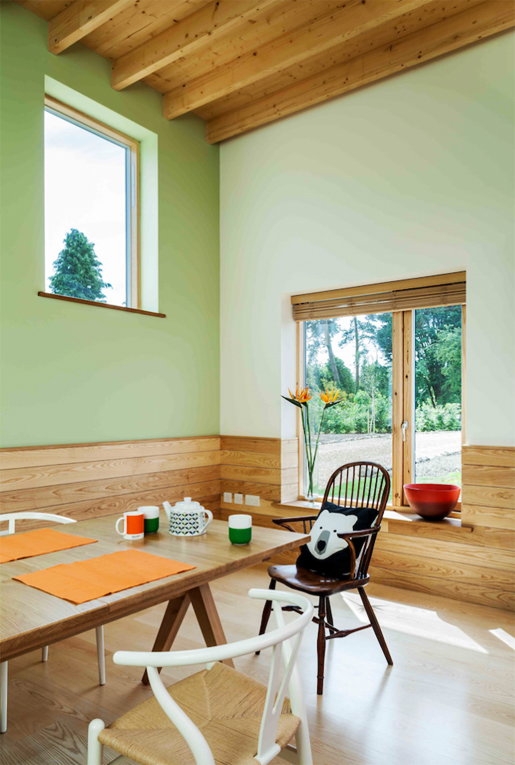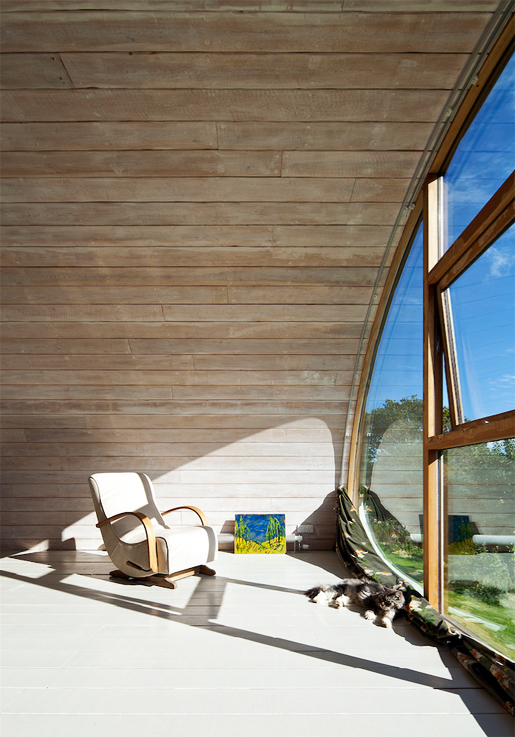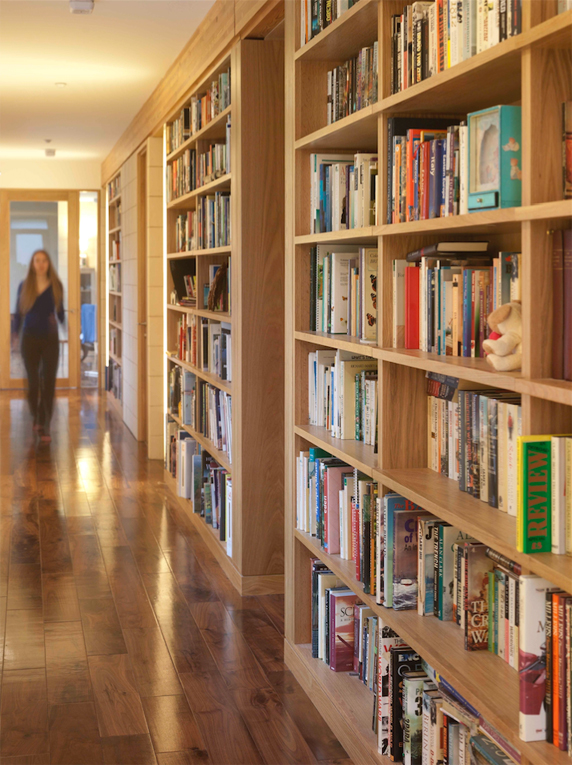Mole Architects' Meredith Bowles talks housing
The award-winning architect designed homes for a new co-housing project in Cambridge. These projects are great, he says - though the future for housing lies in far greater freeing up of land.
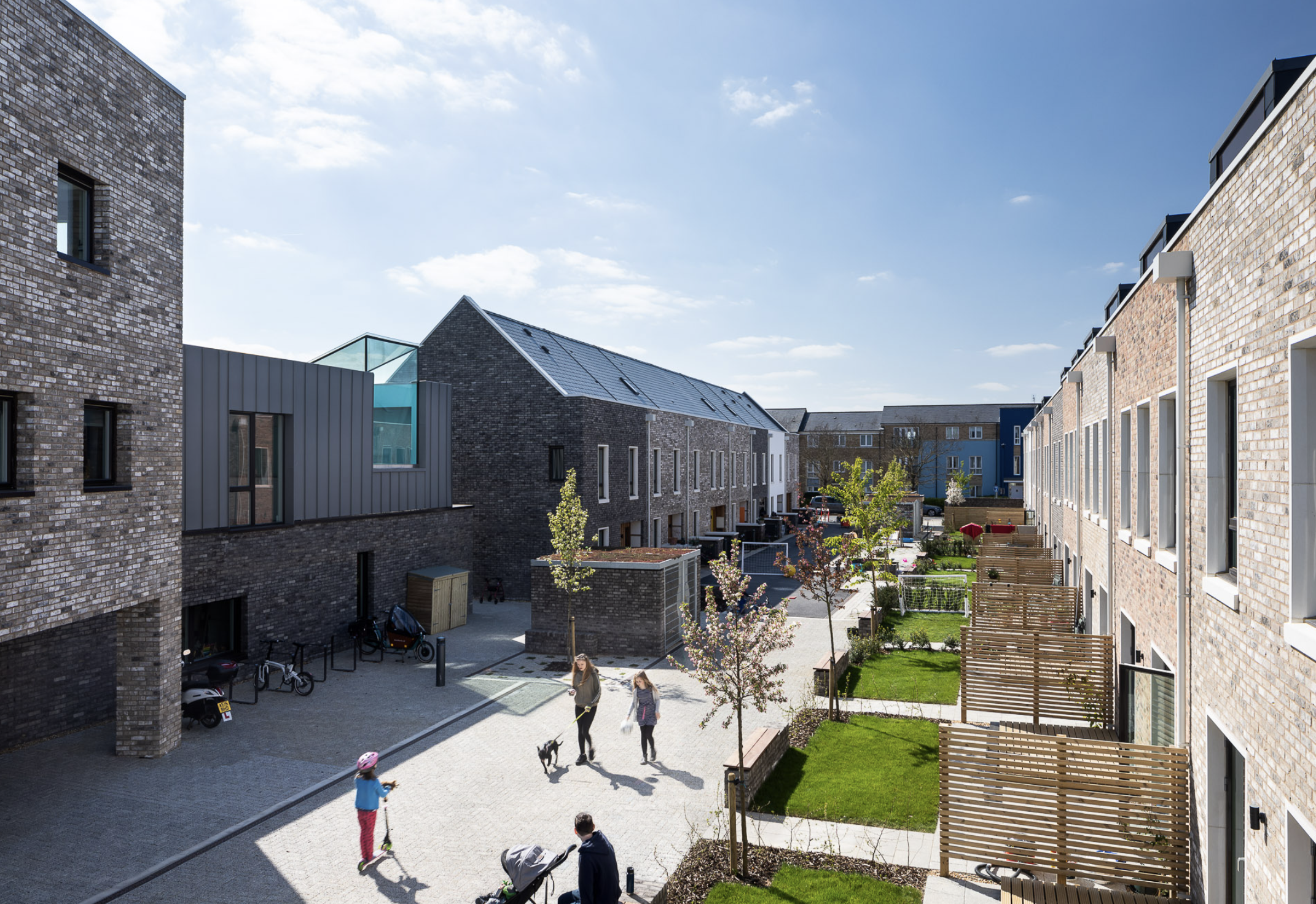
Co-housing is designed so people can live in a sustainable community without the irritations of communal living. Houses and flats are eco and reasonably-sized, there's space for children to play and older people to sit and chat - so these communities should tackle the blight of loneliness. The Cambridge Co-Housing project is underway on a 2.4 acre site in Orchard Park, land sold to developer TOWNhus by Cambridge City Council. Mole Architects has designed the 40 properties, a mix of homes from one-bed flats to four-bed houses. ]
It may not be a term we're that familiar with in the UK but give it time, because co-housing communities are on the increase here. A new one, Marmalade Lane, has been built in Cambridge, a project architect Meredith Bowles of Mole Architects was closely involved with.
'It's a good project, and co-housing - which started as a movement in Denmark in the '60s - is a cause for celebration,' says Bowles. 'People decide to come together to make a community; and what's driving the rise in co-housing projects is that loss of community we're experiencing.'
The residents of Marmalade Lane in the Orchard Park area live in close proximity to each other but in spacious modern homes with large windows built around an open area where children can play and adults can walk, sit and chat. There's a large shared garden for growing food and a shared 'common house' where residents can eat meals together and socialise. Indeed the point of co-housing is it enables a more social, neighbourly way of living.
Bowles explains that co-housing projects like this allow people to live in properties built to higher than normal standards of energy efficiency, so living is more sustainable and energy bills will be lower than in Britain's draughty Victorian housing stock or in the rabbit hutch throw-em-up-quick housing on estates built by the big developers. Orchard Park properties have been designed using passive thermal design principles, they make the most of natural light and the large windows are triple-glazed.
Co-housing should not, however, be confused with affordable housing, because houses aren't priced at a level for key workers - though clearly a one-bed flat is more affordable than a four-bed house.
The Cambridge Co-housing project has been years in the making largely because Cambridge City Council owned the land its being built on and where there's land there is years' of negotiation over price. Councils aren't, by law, able to give land away or sell it at below market rate and obviously it's a huge source of revenue for local authorities so why would they want to even if they could...
It's all about land
And the reason for both the shortage and the cost of housing in the UK, which becomes ever more acute, lies in the cost of land and the lack of any real will to tackle it, explains Bowles. This issue of land is uppermost in his mind, because architect practices such as Mole and Swiss companies such as Userhuus can design all the excellent houses in the world that that cost in the tens of thousands to build, but if landowners won't play ball, then it's all fairly futile.
Housing is all about land - the organisations, companies, authorities and individuals who own it, and won't release it for building until - as many of us view it - they've squeezed the buyer til the pips squeak.
'The cost of housing is nothing to do with the cost of building a house,' says Bowles. 'Look, you can build a house for £50,000, but if you have to pay millions for the land to put the house on, then the house can't be affordable on an average salary.
'The only way to make housing cheaper is to take it away from the market system. You need to work with councils and housing associations so they can deliver affordable housing for rent and for sale. And you need to tackle the vested interests, such as the handful of big house builders in this country which have a huge financial interest in holding on to land they buy. It's in their interest not to build too much because shortage of supply drives up prices.'
So unless government steps in and uses tax as a stick to make it uneconomic to hoard rather than develop land that could be built on; and allows local authorites to make land available for building and to borrow against their assets so they can build housing for rent (they're presently not allowed to do this), then the problems will continue.
'We need a pretty significant revolution against our existing systems if the housing crisis is to be solved,' says Bowles, who acknowledges it's a complex situation with so many divergent interests at stake.
But he's clear that the public shouldn't blame architects for not working to develop affordable houses because they are - and Bowles sees using pre-fabrication as an important tool in building good houses quickly and affordably because with components built off-site, assembly on-site is so much faster. He also like timber construction because timber is carbon neutral. (The Orchard Park development will be using the timber building system from Sweden's Trivselhus.)
What does he mean by orientation? 'I'm thinking about solar gain. If you have a plot, orient the house so the windows face south, not north, so the house gets the most natural light. Too often, windows are put in the wrong place.' And local authority planners should pick up on these issues, he says, and deal with the worst aspects of poor architectural design.
